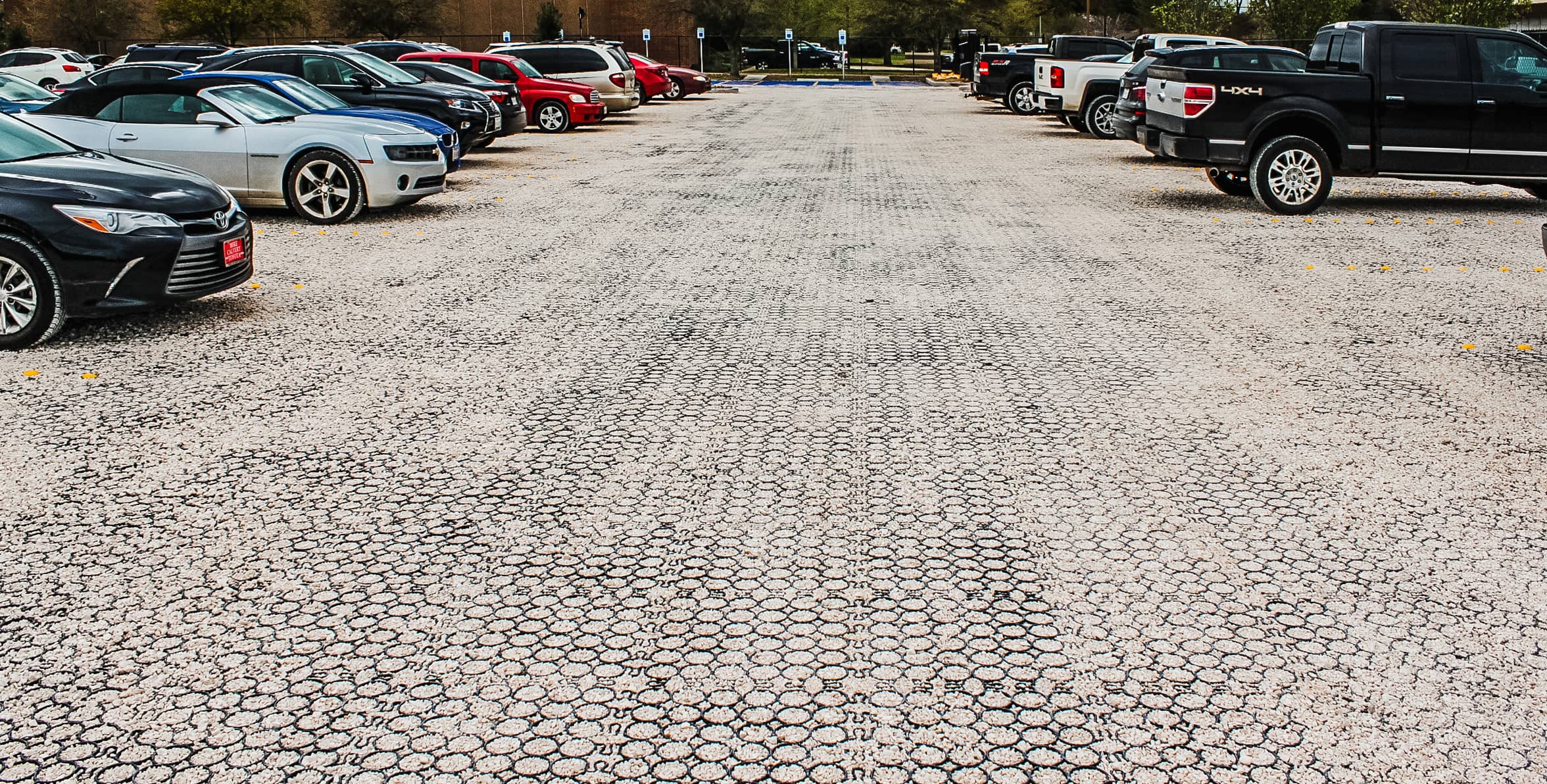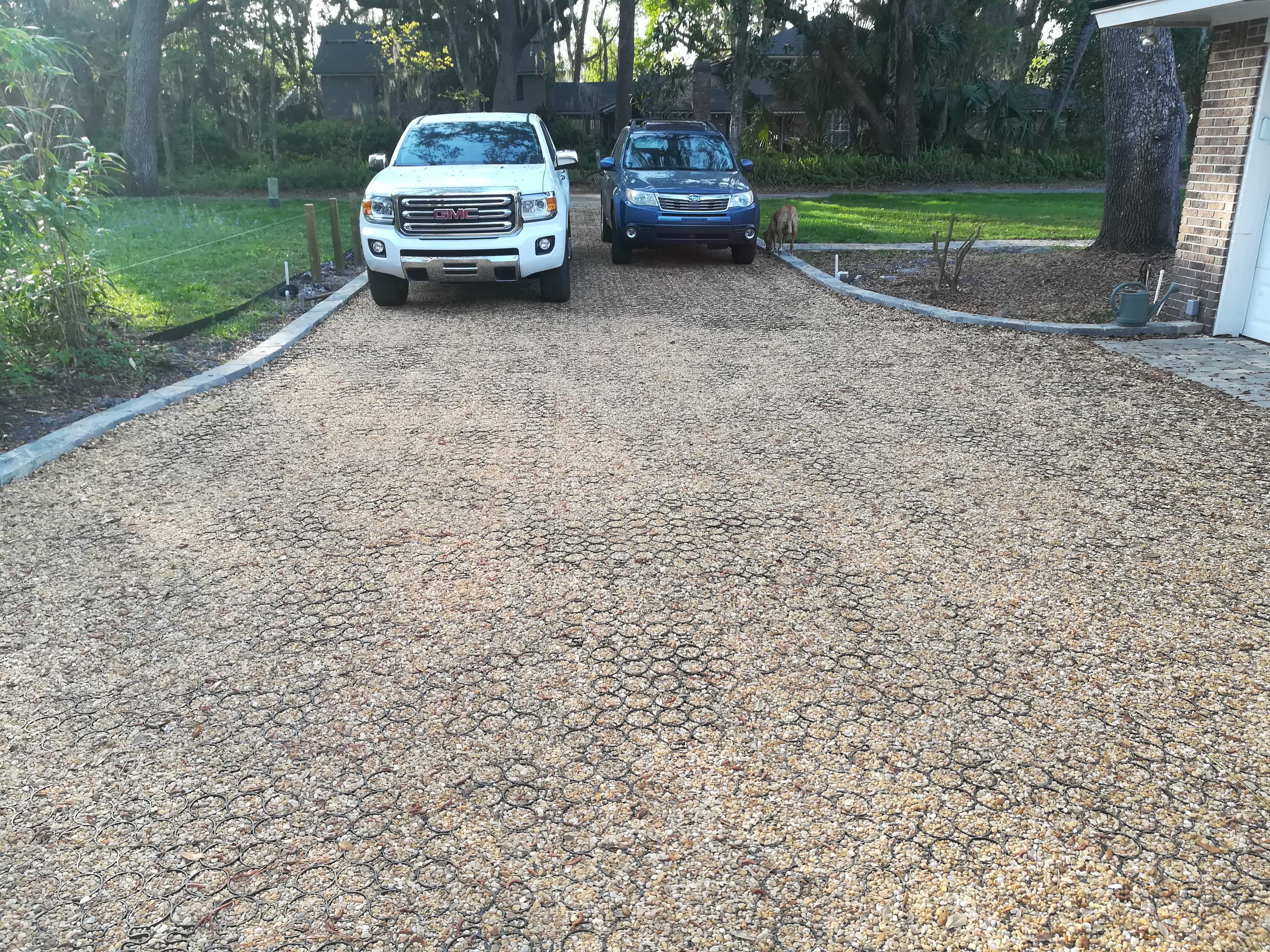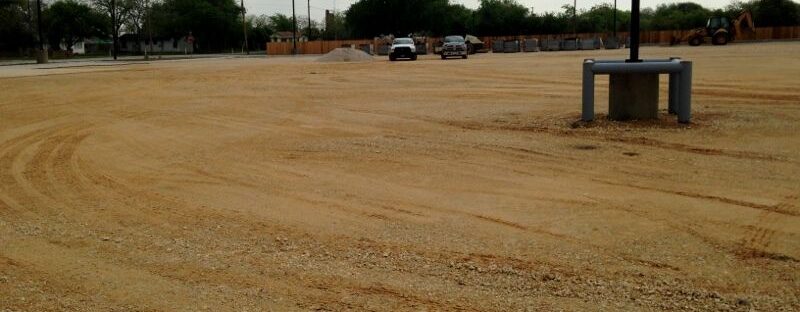
Outdoor spaces face constant pressure from water, weight, and time, but the right paving approach can solve more than one challenge at once. Sustainable systems that reduce runoff and support heavy use are changing how contractors and designers think about surface performance. This guide walks through each phase of a permeable paver installation to help ensure long-term function and structural stability.
Excavation Depths and Base Layers That Handle the Load
Excavation is the first step.
- The site must be cleared to a depth that accounts not just for paver height, but also for the stormwater detention volume (if applicable) and the underlying aggregate.
- Deeper profiles may be necessary depending on load type and project requirements, especially in industrial or vehicle-heavy areas.
- In colder climates, excavation depths should also account for regional frost lines to ensure structural integrity through freeze-thaw cycles.
Once dug, the subgrade must be leveled and compacted to establish a solid foundation.
- Wet soil or pooling water should be addressed with stabilization or drainage planning before proceeding.
- On low-permeability soils, underdrains and pipe systems may be needed to move water away efficiently.
Before any stone is laid, a geotextile fabric is rolled over the subgrade and up the side walls.
Using the Right Geotextiles and Aggregates for Water Flow
This layer protects the aggregate from contamination by fine soils below and keeps the entire structure permeable over time. It’s especially important on sites with silty or clay-heavy subsoils.
This foundational layer supports weight loads while providing the detention capacity needed to manage runoff onsite. Clean, angular stone—typically ¾ to 1 inch in size, like #57 aggregate for residential projects, and 1” to 1.5” for commercial projects —offers the void space necessary for water to infiltrate through the system. The stone must be placed in multiple stages and densified progressively to prevent shifting and preserve long-term stability.
Creating a Smooth Surface for Grid Placement

Small amounts of stone or base material can be added or removed for consistency.
Once the surface is prepped, grid panels are snapped together using a tab-and-slot mechanism. Work begins in a corner, then moves outward to create a stable, interlocked field. Panels can be trimmed with a saw to fit around curbs, trees, or irregular features without losing alignment.
Filling the Grid with Durable, Load-Bearing Materials
After the grid is secured, it’s filled with stone selected for strength and water permeability. Angular gravel between ½ and ⅝ inch is common for residential applications and ½” to ¾” for commercial projects. Other materials like decomposed granite or stabilized soil may be used depending on project goals. Whatever the material, it must be spread evenly and placed flush to the top of the cells to create a finished, traffic-ready surface—an essential step in any permeable paver installation aiming for long-term durability.
In some cases, contractors can run heavy machinery directly on the unfilled grid, depending on the strength of the product. That reduces labor time by allowing rock delivery and compaction to happen faster. However, weak or flexible panels may deform under load if infill is not in place.
This step-by-step video demonstrates the TRUEGRID installation process from excavation to compaction, offering visual guidance to support the instructions outlined above.
Adapting to Movement While Holding Performance
The finished surface should sit level or slightly below adjacent hardscapes or ground level. This ensures water enters the grid easily and reduces the risk of runoff bypass. Once in place, the system acts as a permeable structure that also adapts to minor ground shifts and load changes.
Unlike rigid materials such as asphalt or concrete, a well-executed permeable paver installation accommodates subtle ground movement over time. This resilience minimizes surface cracking and maintains continuity even through freeze-thaw cycles and moderate settling.
Keeping the Surface Clean and Functional Over Time

Permeable paver installation has long-term implications beyond initial performance. Over months and years, the surface will interact with rainfall, vehicle pressure, sediment, and vegetation. These systems may require less upkeep than standard surfaces, but they still need consistent maintenance.
Over time fine debris or sediment can reduce surface permeability. These surface issues—along with weed growth or edge migration—tend to appear where runoff accumulates or organic matter builds up. Addressing these concerns through seasonal inspection and surface grooming preserves both performance and appearance.
Matching Design Strategy to Site-Specific Conditions
Every project, from a modest garden trail to a commercial freight lot, must balance structural capacity with infiltration goals. There’s no one-size-fits-all installation strategy. Urban developments may require underdrain connections and detention modeling. Sloped sites need directional grading to avoid overloading specific cells.
Soil maps and infiltration tests should inform not only material selection but also layout strategy and long-term drainage planning. In some regions, projects that include permeable paving systems may also qualify for stormwater management incentives or development credits.
Why Grid-Based Surfaces Simplify Sustainable Construction
When a project demands a high-strength, environmentally responsible approach, recycled polymer grids provide a reliable alternative to concrete or asphalt. These systems simplify construction by combining structural support with infiltration in a single layer. Rather than layering traditional impervious materials with added drainage elements, the grid base itself becomes part of the stormwater plan.
TRUEGRID manufactures a full product line tailored to different use cases and site demands.
- For industrial yards, fire lanes, and high-load surfaces, TRUEGRID PRO PLUS delivers unmatched compressive strength and stormwater performance.
- In green spaces or areas with existing turf, TRUEGRID ROOT supports stabilized grass while maintaining permeability.
- Used for driveways, extra parking, and pedestrian areas, TRUEGRID PRO LITE balances sustainability with everyday function.
Use TRUEGRID to Streamline Every Phase of Permeable Paver Installation
From excavation to infill, a well-planned permeable paver installation depends on material strength, layout efficiency, and water-handling performance. TRUEGRID provides durable, sustainable paver systems that integrate directly into your site plan and simplify stormwater management. Contact us today for more information.



